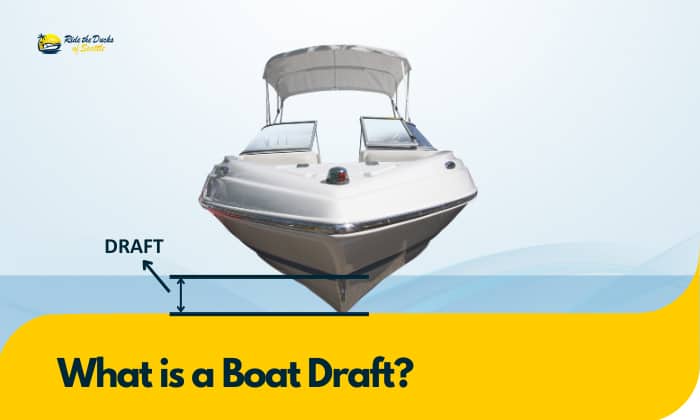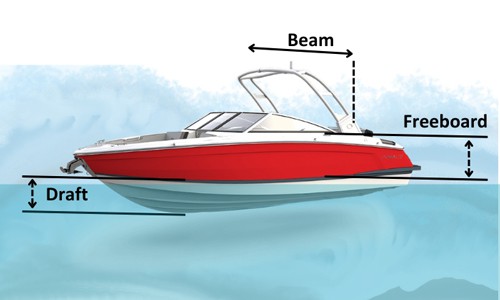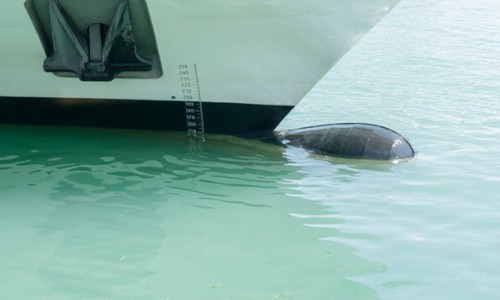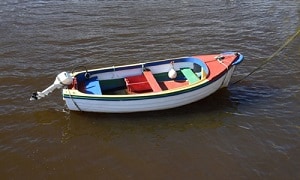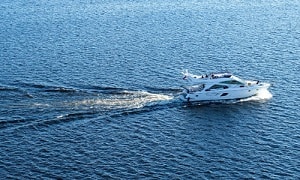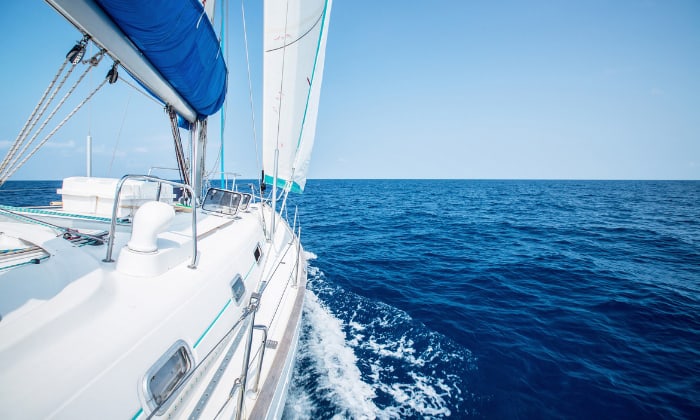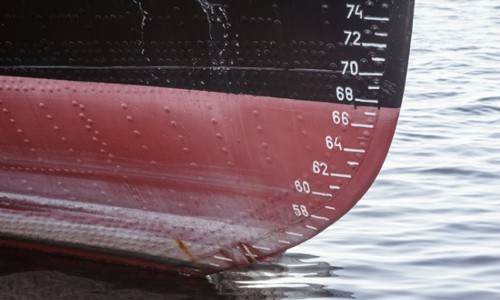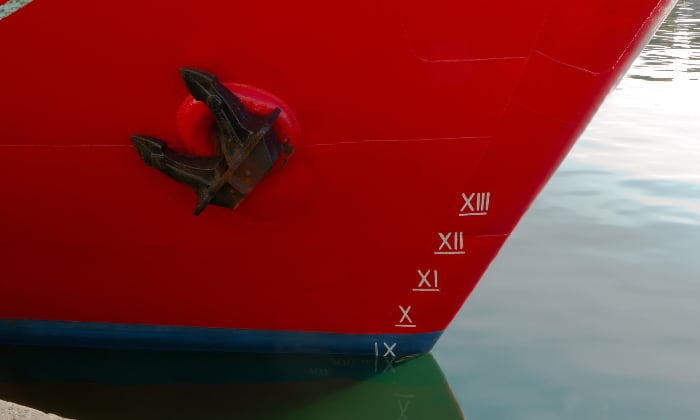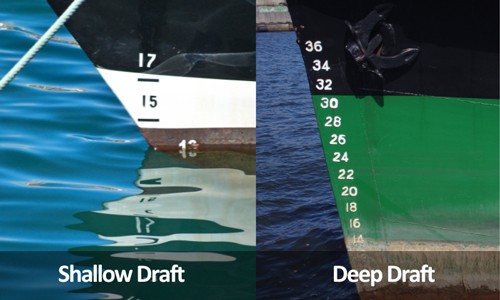What is a boat draft? It’s a measurement used to identify the distance between the waterline and the lowest point of a vessel.
The draft of the boat is one of the factors to determine how shallow your boat can go in the water. It’s essential to do some research on different types of boat drafts before purchasing a vessel to avoid running aground.
Today’s article provides a better insight into a draft boat definition and a comparison between shallow draft vs. deep draft to help you decide which type is more suitable for you. Stay tuned!
Table of Contents
All You Need to Know About Boat Draft
1. Definition
So, what does a boat draft mean? Is it the same as the depth of a boat?
You may find more than one boat draft definition on the Internet. A boat draft, or boat draught in British English, is the longitudinal height between the waterline and the lowest point of the hull.
Boat draft meaning can also be interpreted another way, which is the minimum water depth for the boat to stay afloat safely.
On the other hand, the maximum draft on a boat is the biggest depth of any part including propeller, rudder, drop keels, etc.
2. How Does It Work
Sailors use the term ‘boat draft’ to determine the water depth needed to take the boat out to the water safely. Driving a boat with a shallow draft in deep water can pose potential dangers, and likewise with deep draft in shallow water.
Consequently, before deciding on a boat’s draft, you need to think about the purpose of use – are you using this boat for offshore cruising or just somewhere near the shores?
3. The Deepest Point of a Boat
The deepest point of a boat is the draft; however, the vessel draft doesn’t necessarily mean the bottom of the boat or the deepest point of the hull. It depends on the type of boat to determine the draft. To be more specific:
- Boats with inboard propulsion have the propeller or the rudder laying deepest in the water, so the draft is measured from the lowest point of that gear to the waterline.
- Boats with outboard engines or sterndrives have a maneuverable propeller, so there will be two draft specifications, also known as draft up and draft down on a boat. The draft-down figure is measured from the lowest point of the gear to the waterline, and the draft-up figure is measured from the lowest point of the hull (the keel).
- Boats with jet drives have an integrated drive system, so the draft is also measured from the keel to the waterline.
4. Different Types of Boat Hulls
The three types of boat hulls include skiffs, bay boats, and offshore boats.
- Skiffs – The word ‘skiff’ is a common term used to refer to small boats. They have quite basic construction: a couple of seats, an outboard engine, and a shallow hull.
Skiffs with a draft of 3-4 inches are more suitable for cruising in shallow water bodies due to their small size.
- Bay boats – Also known as flatboats, these boats are great for maneuvering in shallow open water. Their V-shaped hull design allows straightforward traveling in narrow areas.
However, they’re not suitable in choppy waters considering their shallow hull. With a draft of 10-14 inches, skippers can voyage through shallow and fairly choppy water.
- Offshore boats – As the name suggests, these vessels are capable of traveling offshore. The draft of offshore boats is much deeper, typically around 14 feet.
Why is Boat Draft Important?
Figuring out the draft of a boat allows boaters to ride and anchor their boat safely and effectively. Even if you don’t plan to travel in shallow water, there will be situations where you have to moor your boat in the harbor or a dock, in which the water might be shallow.
What is more, a draught of a ship also contributes to balancing the overall mass a vessel can carry with the stability ensured. Additionally, you’d want to opt for a boat with more draft to support the corresponding weight.
When too much weight is put on a boat, the hull will be pushed further down the water’s surface, increasing the odds of swamping even in calm waters. Since the hull is lower than normal, water will gradually find its way in and wreck the engine. Over time, the boat balance will also be influenced.
Boat Draft Calculator
To calculate a boat draft, follow the following formula:
DR= (W/D)/(L*W)*3
DR: The draft measurement
W: The maximum weight of the boat, including passengers, fuel, engines, etc.
L: The boat’s length
W: The boat’s width
D: The density of water
This formula may feel a little confusing to the brain, so we recommend you just load your boat with the most weight and measure the draft directly. Even though you’re going to get yourself soaked, your head will thank you for not making it do all the hard work.
How to Measure Draft on a Boat?
It’s almost impossible to miss the boat draft measurement on a vessel – it looks like a ruler with figures of max draft and min draft on the side. These measurements are usually written close to the stern, on the rear, on the front end, etc.
However, it’s worth mentioning that draft measurements found on a vessel aren’t fully accurate as additional weight, like passengers or fuel tanks, are yet to be included.
To have a more precise measurement, you can just put the most weight your vessel can carry, then measure the distance from the waterline to the lowest point of the boat.
The key to the right measurement is to identify the lowest point of your vessel correctly. It varies depending on what kind of engine the boat has.
Tips to Read Draft in a Boat
Draft Reading (How to read Ship’s Draft) | Marino Guide 002
- At the time of reading the draft marks, the vessel should be upright with less trim.
- Draft marks should be read with the observer as close to the waterline as possible to reduce error.
- In heavy waves, reading is done using the wave cycle – one wave out of every five waves will be sufficient to cover the average boat draft. Read the draft at the particular wave a few times and average it to give an accurate reading of drafts.
FAQs
Shallow Draft vs. Deep Draft
It depends on your purpose of use to decide which kind of draft is better. Each type has its advantages and downsides.
Let’s take a look at the following table for a better insight into the two.
Pros and Cons
| Shallow Draft | Deep Draft | |
| Pros | ● Provides better stability in calm water
● Easier to maneuver ● Good for shallow waters |
● Provides better stability in choppy water
● Seaworthy |
| Cons | ● Lose stability easily when conditions change
● Not for offshore venturing |
● Not for shallow water bodies |
Does Boat Draft Include Prop?
For boats with inboard propulsion, the draft does include a propeller as it is the part that lays deepest in the water.
What is Hull Draft on a Boat?
Hull draft is the term for the depth of the water needed to float a boat. What is the hull of boat definition, though? The hull is the outer body of the boat (including the parts below and above the water), which is watertight to prevent water from getting in.
What is the Difference Between Boat Draft and Depth?
While the draft is measured from the waterline to the lowest point of the hull, the depth is measured from the hull-to-deck joint to the lowest point of the hull, perpendicularly.
Conclusion
What is a boat draft? By now, you should know what defines the draft of a boat. Before heading out to the water, make sure you know the accurate draft measurement of your vessel. While calculating the draft can be complicated, it guarantees a safe and stable traverse in the water.
It’s also important to opt for a specialized draft made for different bodies of water. Venturing offshore with a shallow draft doesn’t sound very ideal, does it?

Ten years of enjoying countless trips on boats never made me love them any less! So I am here to put all those experiences into good use for other boaters who want to have a safe and fun trip with their friends and families.

